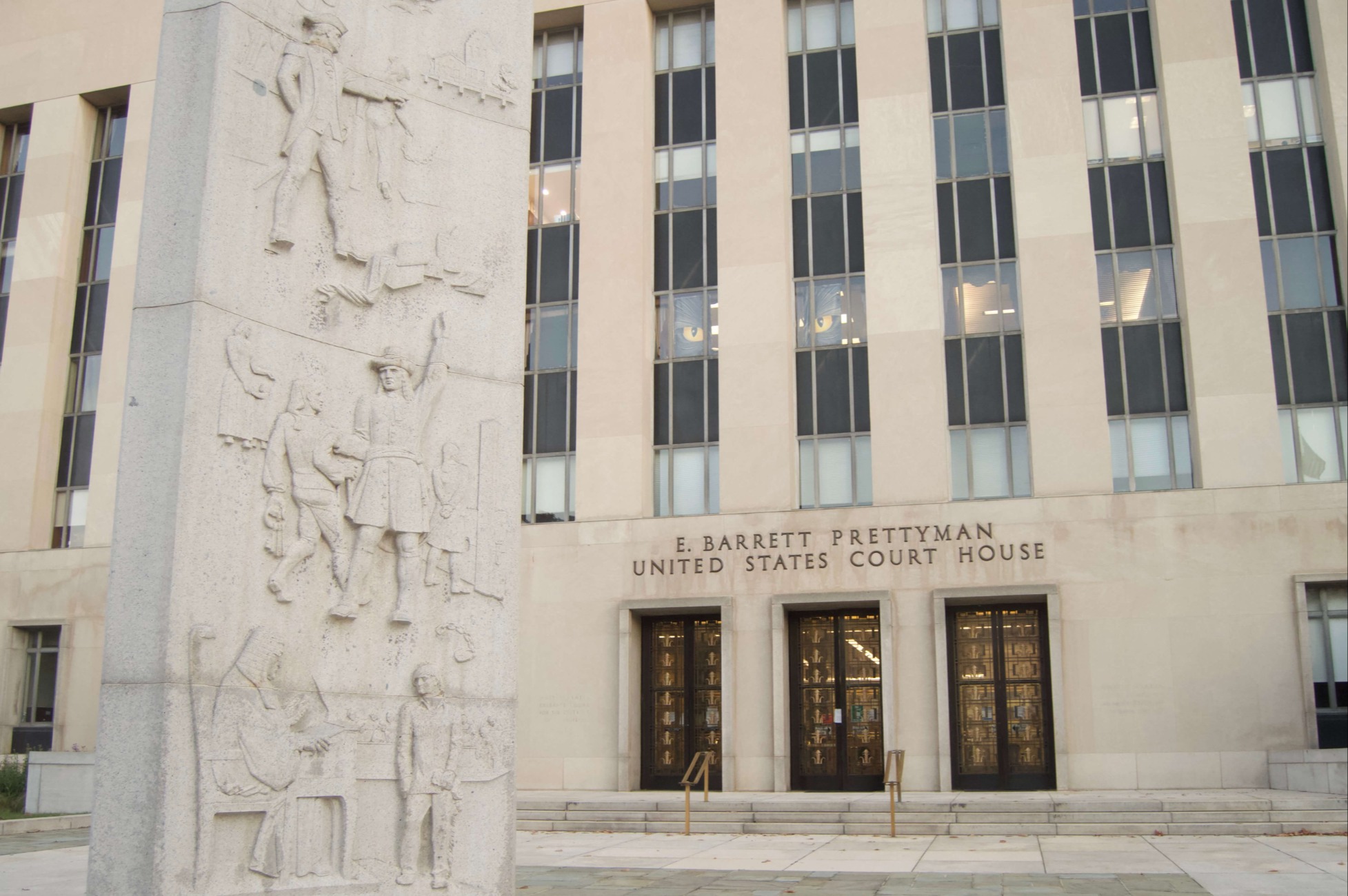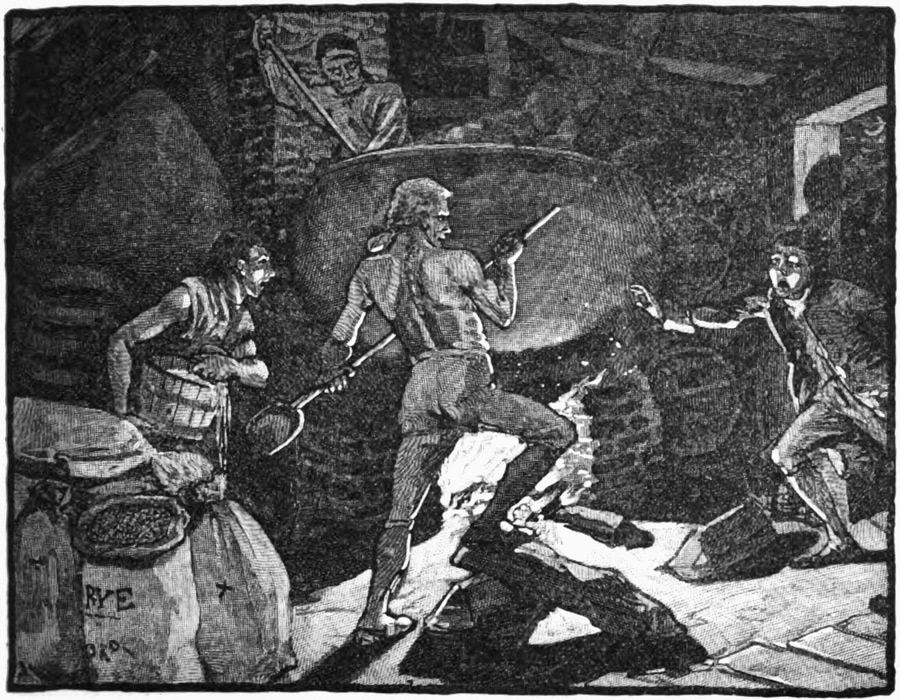The Rule of Law and Major Questions Within Article III
Lower courts’ insistence that the Supreme Court be explicit when overruling precedent is an issue of intra-judicial politics, not the rule of law.

Published by The Lawfare Institute
in Cooperation With

The litigation in Slaughter and other executive branch removal cases—which have unfolded on the Court’s interim docket—has been framed by some observers as being about the commitment of the lower courts to the rule of law. Some commentators, and individual justices of the Supreme Court, have asserted or suggested that lower courts are defying the Supreme Court in the removal cases and elsewhere in contravention of the vertical hierarchy of the judiciary. To critics, these lower court judges are illicitly and insubordinately stymying the legitimate actions of the president and failing to respond to correction by the Supreme Court. To their defenders, lower court judges are upholding established precedent under considerable time and political pressure while the Supreme Court changes the rules of the game without explanation, even to the point of lawlessness by the Court itself. Either way, part of the judiciary is acting improperly, and the call is coming from inside the house.
Close inspection reveals that the friction between the lower courts and the Supreme Court in the removal cases is not a conflict over commitment to the rule of law but, rather, is about the distribution of costs within the judicial system. The Supreme Court seems to want lower courts to act as if one of their seminal precedents has already been overturned, or at least to stop applying it on a non-merits posture. That case is Humphrey’s Executor, a 1935 decision that upheld the constitutionality of “for-cause” removal protections for members of independent agencies like Slaughter herself. The Supreme Court might want the lower courts to ignore Humphrey’s for any number of reasons. Perhaps the Court does not want to spend its credibility with the Trump administration by temporarily stymieing the president on the interim docket just to overrule Humphrey’s and uphold the firings later next year. The Court also might have the substantive view that the president should be permitted to get on with staffing the executive branch unencumbered by removal protections in the meantime. But the lower courts have so far declined to take up the invitation and are in effect insisting that the Court spend effort and credibility elsewhere by fully overruling Humphrey’s, or else continuing to reverse them, burning a different kind of credibility. The conflict in the removal cases is about whether the lower courts can force the Supreme Court to eat these costs.
Removal in the Lower Courts
The decision of the D.C. Circuit in Slaughter came on the heels of two interim orders by the Supreme Court in Trump v. Wilcox and Trump v. Boyle, which stayed lower court decisions reinstating members of the Merit Systems Protection Board, the National Labor Relations Board, and the Consumer Product Safety Commission. The core of the lower court proceedings in Slaughter was a clash between the moribund-but-not-dead-yet Humphrey’s Executor and the interim rulings in Wilcox and Boyle. The members of the D.C. Circuit panel majority rested the substantial weight of their analysis on three propositions: The Supreme Court has not overruled Humphrey’s, including in Wilcox or Boyle; the Court has instructed lower courts to leave even weak Supreme Court precedents undisturbed; and Humphrey’s, if it applies anywhere, applies to the FTC, which was the agency at issue in that case.
Judge Rao emphasized in dissent that even if the removal was unlawful, the decisions in Wilcox and Boyle control in the stay posture as a matter of vertical stare decisis (the obligation of lower courts to follow Supreme Court precedent). She also argued that those decisions implicitly shifted the center of gravity of the equitable analysis from the lawfulness of the removal to the harms suffered by the president. In Wilcox, the Supreme Court stated that “the Government faces greater risk of harm from an order allowing a removed officer to continue exercising the executive power than a wrongfully removed officer faces from being unable to perform her statutory duty.” Rao took Wilcox to establish that “even assuming the removals were unlawful—the government faced the greater harm from reinstatement” and should prevail.
My point here is to assess neither the merits of any of these removals nor the overall performance of either the lower courts or the Supreme Court on the interim docket. Instead, I want to highlight similarities between the unfolding removal litigation and the major questions doctrine (MQD) and suggest that these parallels help us understand what is at stake in the removal cases. The conflict in Slaughter and associated cases is not about whether the Supreme Court or the lower courts are flouting the rule of law but, rather, about how costly it should be for the Supreme Court to change the law.
The Legislative Major Questions Doctrine
The MQD is, at least in its modern incarnation, a recent development in administrative law that limits the way in which Congress may delegate power to the executive. The MQD concerns the interpretation of laws that grant power to administrative agencies, otherwise known as enabling statutes. Unlike constitutional law, where the Supreme Court speaks for itself as the ultimate constitutional interpreter, when interpreting statutes the Court is supposed to operate as the “faithful agent” of Congress, effectuating Congress’s instructions without imposing its own views on the matter.
In a MQD case, the Court tacitly acknowledges that Congress may delegate the contested power to the agency but insists that it do so in a specific way, namely through a clear statement that the agency enjoys that power. If there is no clear statement, the Court will block the agency action. In practical terms, this means that Congress must pay a “clarity tax” by amending regulatory statutes in order to achieve their aims, which is costly given Congress’s limited legislative capacity.
One view of the MQD, shared by both commentators and members of the Court, is that it operates as a thumb on the scale, requiring Congress to be particularly clear on matters of substantial political and economic consequence even if the best reading of the statute would support the delegation to the agency. That is, the Court insists on a clear statement even if it “strains the text.” Requirements like this are called “clear statement rules.” The view that the MQD is a clear statement rule contrasts to the views of Justice Amy Coney Barrett and others who view the MQD as a linguistic rule of thumb. On this view, the MQD does not distort the best reading of the statute—it is the best reading of the statute because it accurately captures Congress’s intent to generally decide the big questions itself rather than delegating them to an agency. Legal scholars remain divided on the best way to understand the MQD, but more members of the Court seem to understand it as a clear statement rule, and so I adopt that understanding.
The MQD, at least when understood as a clear statement rule, poses problems for advocates of faithful agency—if the best reading of the statute supports the agency action, may a faithful agent place a thumb on the scale the other way? I do not try to square that circle here,but only note that proponents of the MQD as a clear statement rule, like Justice Neil Gorsuch, still understand themselves as faithful agents to Congress in statutory cases. This is important because it illustrates that members of the Court view the MQD as consistent with their responsibility to remain subordinate to Congress in the statutory context. Correspondingly, while the MQD has been roundly criticized, the criticism typically views the doctrine as within the realm of reasonable disagreement among judges and not as clear insubordination or a threat to the rule of law itself.
The Judicial Major Questions Doctrine
The legislative MQD helps us understand the real stakes of the conflict between the Supreme Court and the lower courts in the removal litigation. In the removal cases, the lower courts are acting like the Supreme Court in a legislative MQD case. To start, whether the president enjoys an indefeasible removal power is surely a major legal question. In Slaughter, the D.C. Circuit (a) acknowledged that it was subordinate to the Supreme Court, (b) recognized that the Court may overrule Humphrey’s, but (c) nevertheless insisted that the Court do so through a specific procedure, in this case, by writing the words “Humphrey’s is overruled” on the merits docket, or by reversing the panel majority on the interim docket, as it eventually did. The Supreme Court can openly say that it is putting a thumb on the scale in a way the court of appeals is unlikely to for essentially rhetorical reasons, but it’s a reasonable thing for lower courts to think. After all, if the Court can insist that its boss (Congress) be clear when the stakes are high, why can’t the lower courts insist that their boss be clear? Either way, the effect is the same: force the superior decision-maker to incur additional costs. The MQD comes to Article III.
If this analogy holds, then the removal litigation is not an instance of the lower courts defying their legitimate superior but, instead, is a conflict over the allocation of costs within the judicial branch. But the analogy might not hold, and I want to consider a counterargument. Here is one possible disanalogy. The Supreme Court understands itself as the supereminent constitutional interpreter and protector; it is subordinate to Congress with respect to statutory interpretation but superior to Congress with respect to constitutional interpretation. So if the MQD is best understood as protecting constitutional values through statutory interpretation, then the Supreme Court might claim that the MQD exercises power in an area where it is superior to Congress. By contrast, lower courts are subordinate to the Supreme Court with respect to both constitutional and statutory law. That might mean that it is inappropriate for lower courts to impose costs on the Supreme Court.
This argument is unconvincing because it proves too much. A lower court judge could offer two replies. First, while the inferior courts are subordinate to the Supreme Court, equitable practice like that in Slaughter is an area of historic discretion for lower courts. Indeed it was not obvious that the Supreme Court’s interim orders were even precedential until recently. A lower court judge could reasonably conclude that, on an equitable posture, their relationship to the Court is more peer-like than on a standard merits posture.
Second, lower courts already impose costs on the Supreme Court by writing separate opinions criticizing established law, or even narrowing the Court’s precedents from below. The leap from “the Supreme Court always outranks lower courts” to “lower courts may never intentionally impose costs on the Supreme Court” is an unjustified inference that cannot be squared with established patterns of behavior by lower courts. An intra-Article III MQD therefore cannot be chalked up to insubordination on its face. The interaction between inferior courts and the Supreme Court is a political enterprise as well as a legal one, and the Supreme Court is not immune from political cost shifting just because it stands atop the heap of the judiciary.
There are also disanalogies that run the other way and suggest that a judicial MQD is less suspect than its legislative counterpart. Most obviously, and as the Slaughter majority stressed, the Court has explicitly instructed lower courts to hold them to the requirements of full overruling of its precedents. Whatever the merits of the MQD as a rule of thumb about how Congress speaks, the U.S. Congress has never actually instructed the courts to impose the MQD the way the Court has insisted that lower courts remain faithful to decrepit precedents. Additionally, the formal costs imposed by an intra-Article III major questions doctrine are much lower than the costs associated with the legislative MQD. The Supreme Court may countermand the D.C. Circuit on the interim docket at the rough cost of between four and eight phone calls by the chief justice (who entered an administrative stay by himself). By contrast, Congress must pay the formal costs of bicameralism and presentment in addition to the informal costs of developing consensus that the matter is worth the expenditure of plenary time. The costs of overruling Humphrey’s altogether is higher than summary reversal on an equitable posture—at least if you buy the arguments that overruling precedent and invalidating statutes passed by Congress are costly—but are still far lower than those faced by a Congress working to amend a complex regulatory statute.
Intrajudicial Politics
The actions of the lower courts in the removal cases to this point have been well within a zone of reasonableness such that talk of defiance is unproductive—the commitment of neither the court of appeals nor the Supreme Court to following the law as best they can is not at issue in the removal cases (or at least no more than in any hard constitutional case). The Court is going to overrule or gut Humphrey’s, as is their prerogative to do, either on the merits docket or the interim docket. As a judicial major question, lower courts have a strong case to continue to enjoin removals of members of independent agencies unless and until they finally overrule Humphrey’s on the merits docket. Neither the Supreme Court nor the lower courts are acting lawlessly with respect to this issue.
Instead, the stakes internal to the judiciary are when the Supreme Court should have to expend its effort and credibility to impose its will on lower courts absent the usual channels of merits review with full explanation. If the lower courts cooperated and allowed the executive branch firings to proceed on an interim posture, the Supreme Court could simply affirm them (or, more accurately, leave their ruling undisturbed), achieving the substantive aims of the justices while blunting the charge of being excessively solicitous to the president—a perception that is also costly. From the perspective of the Supreme Court, affirming lower court decisions that permitted firings to go forward is the cheapest option, and it is exactly this option that lower courts keep denying the justices. A case can be made that these costs should not be foisted upon the Court—time and attention are among the most valuable goods in all of government, and the Supreme Court might be trying to conserve its legitimacy for future confrontation with the president. On this view, it would be better if the lower courts got with the program and allowed the firings to proceed.
But arguments also run the other way. Providing reasoned explanation is an important judicial value, as many critics of the Court’s interim docket practice observe. Publicity is also relevant—maybe the Supreme Court should be forced to take full credit for overruling precedent and striking down national legislation. Or it might be the case that major legal change simply should not happen on the interim docket. On this view, the lower courts are right to impose a clarity tax on the Supreme Court.
These questions are about the collective ordering of the judiciary—that is, they are essentially political. Notably, and unlike other recent decisions on the Court’s interim docket, the Court’s order in Slaughter did not contain a rebuke of the lower court decision. The Court also expedited consideration of the merits by granting “certiorari before judgment”—that is, the Court agreed to hear the case before the lower courts fully considered it—where most expect that Humphrey’s will finally be overruled. In this respect, the D.C. Circuit will have succeeded in forcing the Court to incur the costs associated with explicitly overruling that case. The full extent of these costs for both Court and president remain to be seen. But if we understand both the legislative and judicial MQDs as setting a price to take some action, then we need a political theory of who sets the price and how, not an ever-more-baroque theory of the rule of law.
These are the questions, and not whether the lower courts are clearly flouting the law, that we should be asking about the removal cases. Analysis of when constitutional cost shifting is permissible will doubtless be branch- and component-specific, but a structural conversation along these lines is more productive than arguing about whether lower courts have clearly bungled a body of law that itself remains in considerable flux, or whether the Supreme Court is itself pulling a fast one in these cases. Avulsive change to the law is always contested and sometimes strains the bounds of legality; many actions of the present administration are well outside of those bounds. But the removal litigation is about the messy contours of responsibility and costs within the judiciary, not deep questions about the rule of law.


.jpg?sfvrsn=8b09cc66_5)


